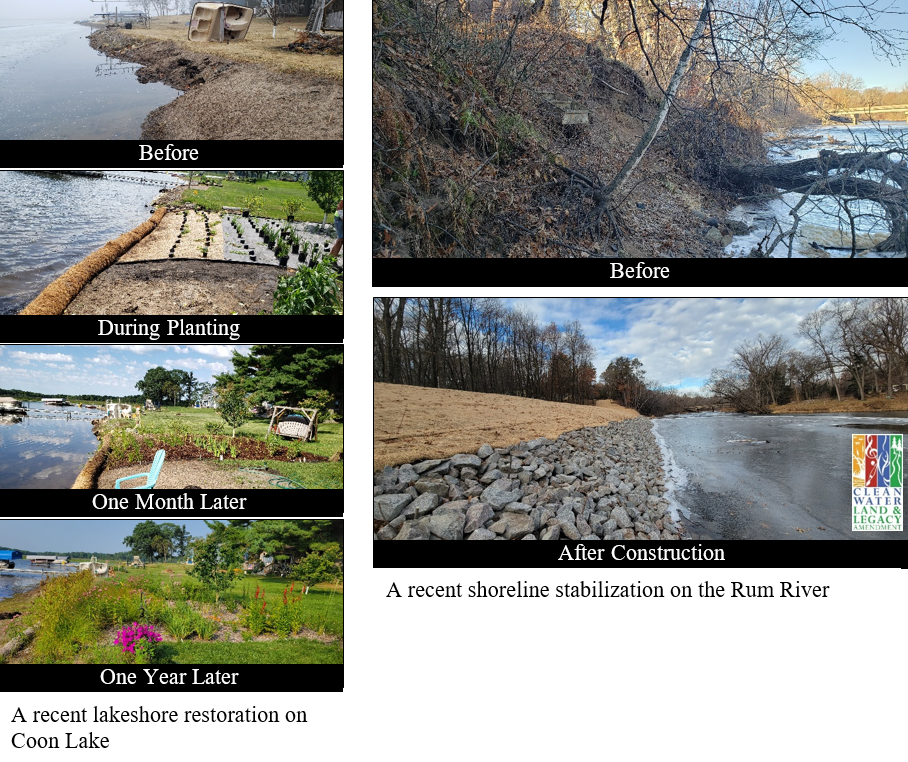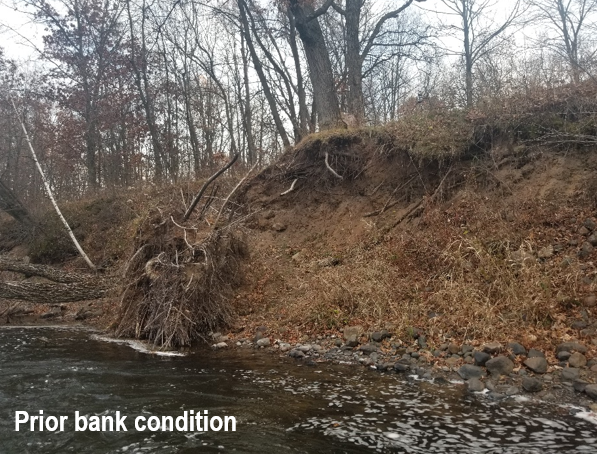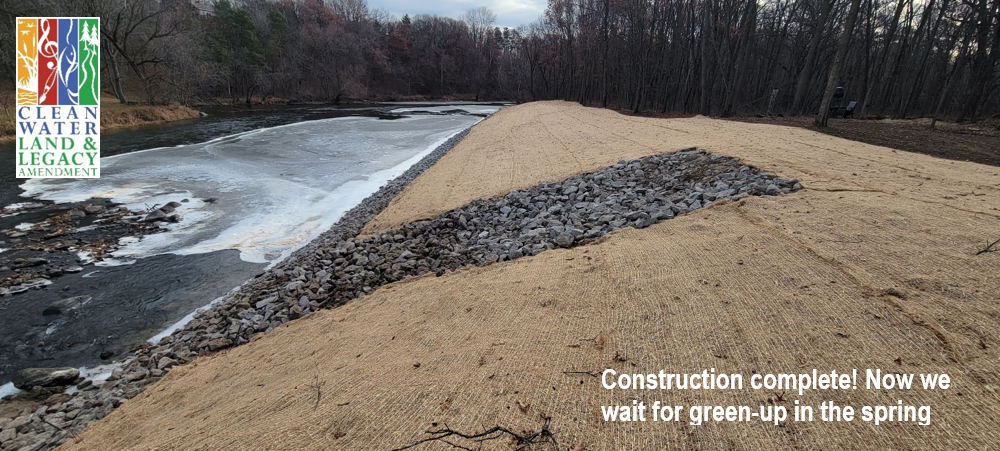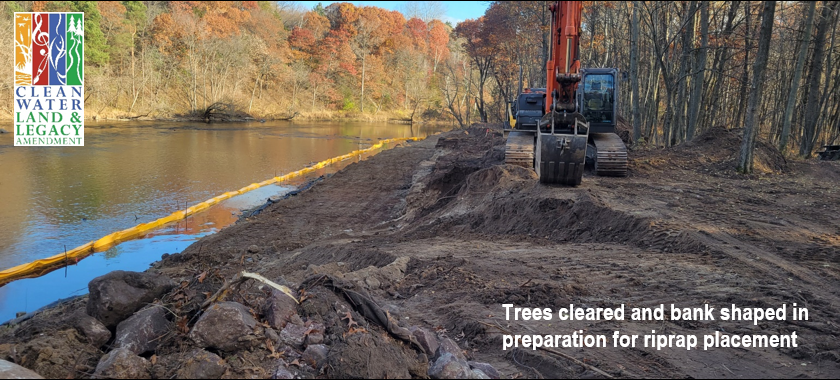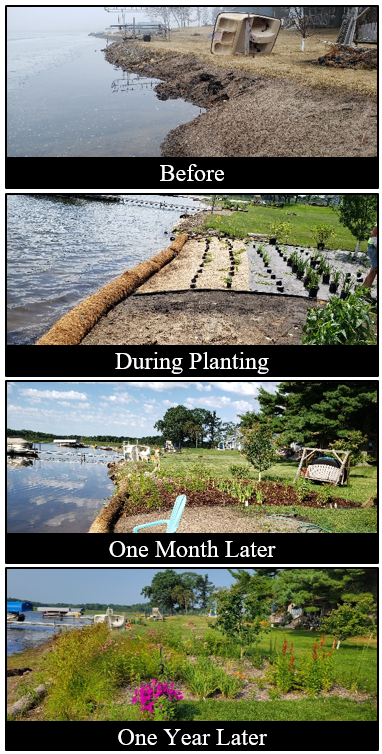ACD has a number of grant opportunities available for addressing shoreline erosion along both streams and lakes in Anoka County. If you have noticed your lakeshore migrating back on you over time, or perhaps once had a low walkable area along your river frontage that is now gone leaving only a steep drop-off, ACD may be able to help you design and even fund a project to protect your property.
The first step is a site visit to your property by ACD staff. Now is a great time to reach out to ACD to plan a site visit in the spring. We will assess your erosion problems, give you advice on how to address them, and see if your shoreline might fit into one of our various grant programs for financial assistance. Shoreline restoration does far more than just protect your property. It also protects the water resource you live on, and also enhances habitat for all of the wildlife that utilizes that resource!
